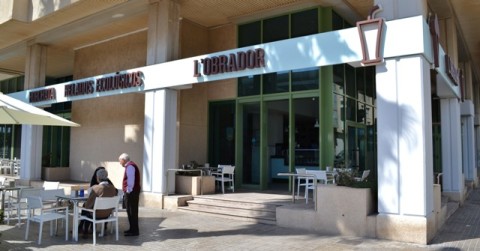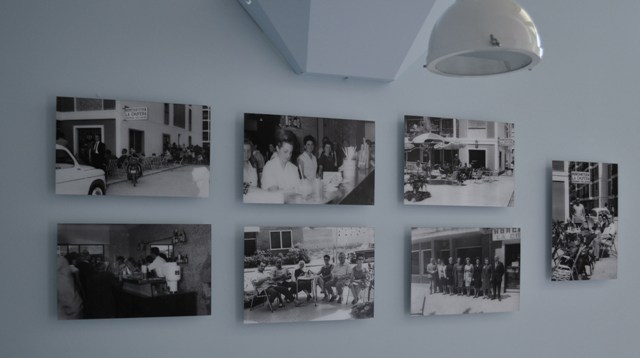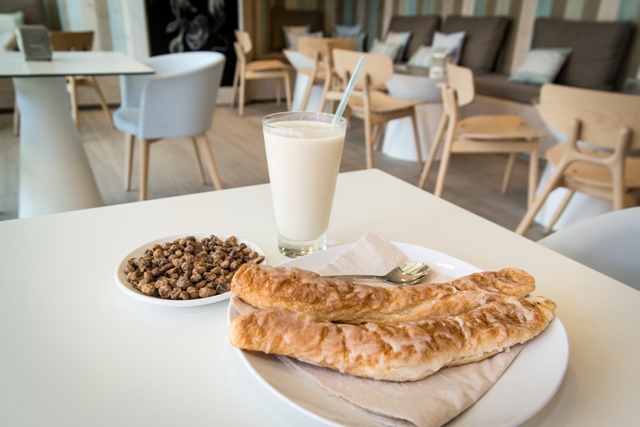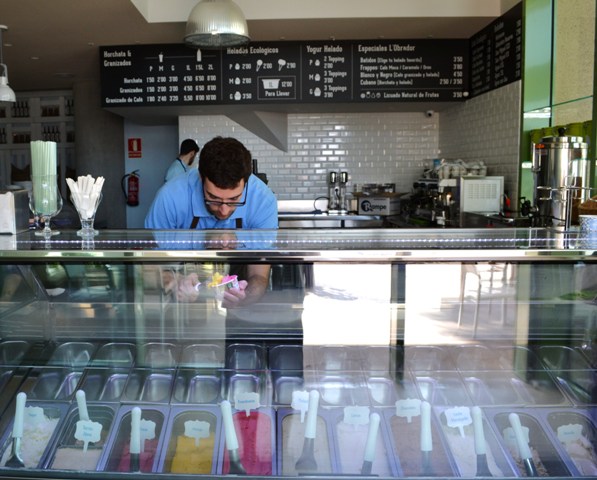A recent study by the Unidad de Investigación Oftalmológica “Santiago Grisolía” de la Fundación para la Investigación Sanitaria y Biomédica de la Generalitat (Fisabio), the Centro de Especialidades Monteolivete, the Hospital de Manises and the Centro de Estudios Oftalmológicos CEOVA has shown that 30 grams a month of Valencian tiger nuts can improve your sight, especially if you suffer from dry eye syndrome.
The other day I was talking about tigers and carp with an expert; José Maria Bou. The connection may not be obvious at first, but José Maria’s company, among other things, exports tiger nuts to countries such as Britain, Germany, France and Holland, where the savage northerners use this extraordinary tuber as bait for carp; although to be fair, Germans have apparently started eating tiger nuts, and I’m pretty sure we used to buy them at the local sweet shop when I was a kid.
José Maria’s company however, appreciates that the tiger nut, which is cultivated in Europe exclusively just north of the city of Valencia around the village of Alboraya, is used to make Horchata.
Horchata is an extremely healthy drink, rich in phosphorous, potassium and other minerals; cholesterol-free and apparently contributing to the reduction of certain kinds of cancer, which is probably why you see so many people drinking it cigarette in hand. It has important amino acids, helps the digestion, and if this goes on much longer I might even be tempted to go out and try some.
The tiger nut has been used for over 4,000 years since the Egyptians saw its value, and its extract is believed to be even healthier than olive oil. The Egyptians also invented beer (God bless them!) and used tiger nuts in the process, a tradition that is returning as more and more kinds of craft beers are appearing in Valencia, including those made with tiger nuts, or ‘the milk of the tiger’ as I like to call it..
In the 13th century the Moors brought tiger nuts to Valencia along with a lot of other useful stuff such as irrigation.
But hang on, I hadn’t finished with the quality of tiger nuts! Tiger nut based Horchata is gluten-free (I’m not really sure what gluten is or does but it must be pretty awful and no doubt prevalent in most things I like); Horchata can be imbibed by diabetics and people allergic to dairy products, it’s good for sufferers of high blood pressure and helps prevent atherosclerosis and kidney insufficiency.
Furthermore, if you drink it every day you’ll soon be able to see through buildings and walk on water.
Alboraya and 15 other nearby villages are responsible for the cultivation of approximately 500 hectares of land, consisting almost exclusively of small fields, which bring about the production of an estimated 50 million litres of Horchata every year.
This is mainly drunk around Valencia; in fact it is a Valencian tradition on Sundays to take the family to one of Alboraya’s ‘horchaterias’ to enjoy a glass of the drink (iced or liquid) along with ‘fartons’, which despite their unfortunate name, are in fact sweet, elongated pastries, which are customarily dunked into the horchata, much like we British dunk toast and marmalade in our morning coffee, or prawn cocktail flavoured crisps in our gin and tonic (or at least I do).
However, Horchata is now being exported to France, Portugal and Mexico, and is promoted in trade fairs and through leaflets and audio-visual material by the “Consejo Regulador de Denominación de Origin”, a body that regulates and assures the quality of the product.
José Maria Bou doesn’t only import and export tiger nuts and their by-products, he also makes Horchata, and as the owner of various fields, and, as a buyer of 20% of Valencia’s production, he is able to select the best of the best to produce ‘Organic’ Horchata, an Horchata that is made from tiger nuts whose fields have not used any harmful or unorganic pesticides or fertilisers for a minimum of three years in order to obtain the certificates proving organic, ecological cultivation from the Comite de Agricultura Ecológica de la Comunidad Valenciana.
José María Bou is the Sales and Marketing Manager of Chufas Bou and represents the third generation of his family that has been in the tiger nut business, although before that previous generations also grew them. His grandfather, José María Bou Casares (1912-1993) was the founder of the family tradition of selling tiger nuts. Around the mid-nineteenth century they were grown in family plots and sold at the Mercado de Abastos in Valencia. At the beginning of the twentieth century the first Horchata bars appeared in the big cities of Spain.
In April 1945, a field of tiger nuts was sown, then harvested and dried, moving them daily until they reached a perfect state of curing. They were then taken to Barcelona where, in spite of not knowing anyone, they were sold out in less than a week thanks to their quality. In 1995 JB Natural Foods, S.L. was created as a company to internationally market the different varieties of tiger nuts and their by-products.
Now the young José Maria, a graduate of Caxton College, is trying to develop the business and expand the product range by diversifying with tiger nut-based muesli, bread, oils and cosmetics, taking advantage of the high concentrations of Vitamins C and E.
These products, as well as organic ice creams and the best organic Horchata, both traditional and sugarless, in Valencia, are available in the warmer months of the year at the L’Obrador horchateria at Avenida Mare Nostrum on the Patacona beach, at Avenida Mare Nostrum 7.

According to José Maria, “‘L‘Obrador’ means ‘working space’ in English. We chose that name because we have a glass walled working space so everybody can see where and how we make our products!”

Among the classy decor are photos of his aunt and uncle, who opened one of the first horchaterias, La Chufera, in 1964.
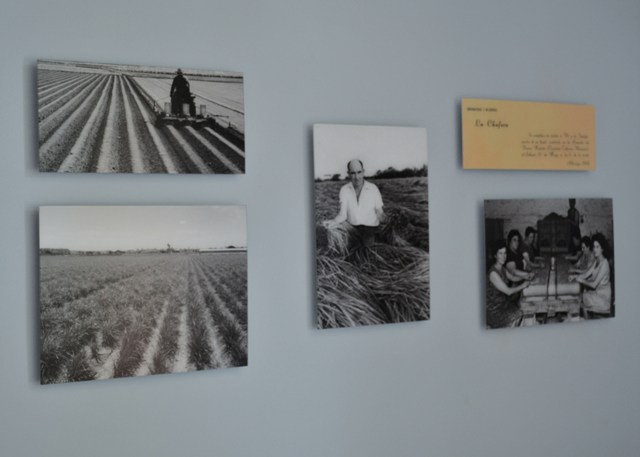
And indeed, while sitting on one of the comfortable chairs, staring down into the transparent tables with their marine theme artifacts, you can, should you so choose, look up and watch a batch of Alboraya’s best tiger nuts being turned into 65 litres of Horchata in a matter of minutes.
They will also tempt your palate with iced juices, organic cakes (including such unusual flavours as beetroot and carrot), rolls, salads and even take-away fruits and vegetables organically grown.
Their ice creams are supplied by an Italian manufacturer using only products derived from free range animals with no chemicals, preservatives or additives, and you can even wipe your saliva (and there will be a lot of it) with recycled eco-serviettes.
They make their own muesli, bread and chocolate with tiger nuts, and are working on a range of cosmetics, as well as oil, which can also be bought in Valencian health food shops. Their soap is already available, and to ensure the best possible quality, they send the tiger nuts to a special manufacturer in Germany!
Fields of tiger nuts are a common and pleasant sight around the north of Valencia, a touch of bright green among the prevalent brown during the hot summer months. The crop is planted at the end of March or beginning of April and harvested around the first week of November. It is eminently suitable for Valencia as it needs a mild climate and sandy soil such as that to be found near coastal areas.
After harvesting, the nuts are washed and then go through a drying process, being tossed twice a day for about three months during which they lose about 40% of their moisture. Finally, imperfect nuts and foreign bodies are removed by hand and then they are soaked, ground and pressed into a paste from which the liquid is extracted.
At the end of the process sugar is added, and then each of the 500 to 600 local producers adds other elements such as cinnamon or lemon peel, depending on personal preference and traditional family recipes.
For local farmers, the tiger nut is a godsend, because the prices are guaranteed by the regulating authority and because the crop, being a tuber, is less susceptible to inclement weather.
Although it is a traditional occupation involving a lot of manual labour in small, family fields, the tiger nut growers are keeping up with the times, largely through an agreement with the Agronomy Faculty of Valencia Polytechnic, who are helping to explore more efficient ways of cultivating the crop and dealing with pests.
November is one of my favourite times of the year in Valencia. At a given signal, the tiger nut growers set to work burning the chaff of the plant and, if the wind is in the right direction, they kindly fill the city with a thick pall of smoke, reminiscent of Victorian London and its fog. You could almost expect Jack the Ripper to stumble out of the dense smoke on his way to an appointment with another patient, but undoubtedly he would pause beforehand for a nice refreshing glass of tiger’s milk to build up the strength of his cutting arm among the tiled splendour of one of Alboraya’s pleasant terraces.
José Maria, having studied at the British school, Caxton College, speaks excellent English.

